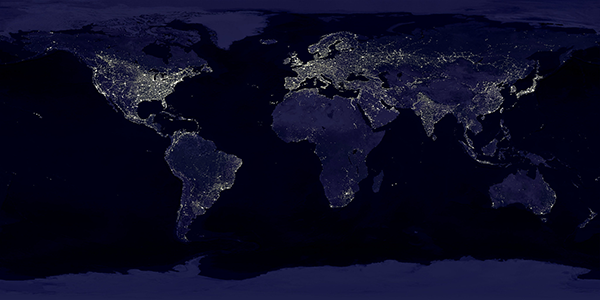A .gov website belongs to an official government organization in the United States.
A lock () or https:// means you've safely connected to the .gov website. Share sensitive information only on official, secure websites.
2 February 2023
adapted from the story by NOAA Communications

Scientists have long known that when common pollutants from traffic exhaust get cooked by the sun, they get transformed into ozone and particulates, two "secondary" pollutants that are harmful to human health.
But what happens when the sun goes down? As it turns out, the chemistry of air pollution at night is much less well understood, even though it primes the atmosphere for what happens the next day.
To date, only a limited number of modeling studies have assessed how the production of ozone and particulate matter is influenced by nighttime atmospheric chemistry, said Steven Brown, a researcher with NOAA's Chemical Sciences Laboratory. Together with researchers in China, Brown helped develop a new analysis method scientists can use to assess the influence of nighttime atmospheric chemistry on air quality around the world.
"We hope this work will lead to further research that explores how air quality and climate are affected by what happens when the sun goes down," said Brown.
Their work was published in the journal Nature Geoscience. Nature Geoscience featured the paper in an editorial Night-time clues to pollution with a related paper, Rapid night-time nanoparticle growth in Delhi driven by biomass-burning emissions.
The new analysis focuses on production of the nitrate radical, or NO3, a potent oxidant that originates with the emissions of nitrogen oxides from sources such as tailpipes and smokestacks. Oxidation is a type of reaction that is responsible for the production of some secondary air pollutants created by reactions in the atmosphere, as well as the ultimate removal of many other types of air pollutants. NO3 is present mainly at night because it is rapidly destroyed by sunlight.

The research found that while the rate of nighttime oxidant production was very rapid in polluted regions of the U.S. and Europe in the past, it has moderated due to the implementation of air quality regulations. Data shows a slightly decreasing trend in the past decade, but it's not declining as rapidly as other air pollutants, such as nitrogen oxides.
Nighttime oxidation rates in China, the monitoring data suggest, are still rapidly increasing, despite recent controls on nitrogen oxide pollutants there. The largest sources of nitrogen oxides, or NOx, are fossil-fuel burning engines. In the atmosphere, NOx reacts with other pollutants to form smog and acid rain.
The analysis also demonstrated for the first time that nighttime chemistry involving nitrogen oxides, or NOx, is not linear, just like daytime chemistry. Other factors control oxidation rates, which can either increase or decrease with decreasing NOx.
Based on the 40-years of data from Los Angeles since 1980, and air quality measurements capturing transportation sector pollution declines in response to COVID-19, the researchers suggest reducing emissions of volatile organic compounds, which are emitted by everything from petroleum fuels to common household products, would simultaneously reduce daytime ozone production and nighttime oxidation.
As nations around the globe strive to improve air quality and reduce global warming, Brown said, it will be important to have a clearer understanding of how different pollution control strategies influence nighttime atmospheric chemistry.
The research team included scientists from Peking University and Sun Yat-sen University.

Wang, H., H. Wang, X. Lu, K. Lu, L. Zhang, Y.J. Tham, Z. Shi, K. Aikin, S. Fan, S.S. Brown, and Y. Zhang, Increased night-time oxidation over China despite widespread decrease across the globe, Nature Geoscience, doi:10.1038/s41561-022-01122-x, 2023.
Nitrogen oxides (NOx = NO + NO2) emitted from combustion and natural sources are reactive gases that regulate the composition of Earth's atmosphere. Nocturnal oxidation driven by nitrate radicals is an important but poorly understood process in atmospheric chemistry, affecting the lifetimes of NOx and ozone and particulate pollution levels. Understanding the trends of nitrate radicals is important to formulating effective pollution mitigation strategies and understanding the influence of NOx on climate. Here we analyse publicly available monitoring data on NOx and ozone to assess production rates and trends of surface nitrate radicals from 2014 to 2021 across the globe. We show that nitrate radicals have undergone strong increases in China during 2014–2019 but exhibited modest decreases in the United States and the European Union. Accelerated night-time oxidation has shortened the lifetime of summer NOx in China by 30% during 2014–2019. This change will strongly affect ozone formation and has policy implications for the joint control of ozone and fine particulate pollution.